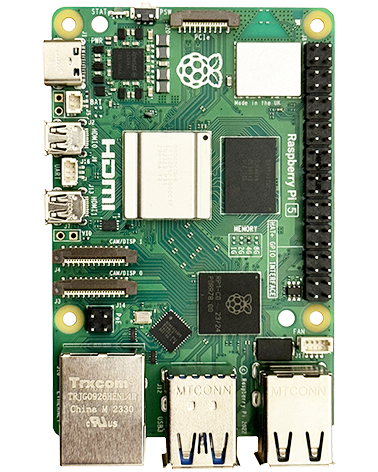fetchmail is a full-featured IMAP and POP client
Install
sudo apt-get install fetchmail
Configure How Mail Is Handled
Now create a file named ~/.fetchmailrc in your home directory.
sudo nano
Enter this:
poll imap.gmail.com
protocol IMAP
user "[email protected]" with password "TheGmailPassword" mda "/home/pi/myfetchmailparser.sh"
folder 'INBOX'
fetchlimit 1
#keep
ssl
Fetchmail by default will try and pass mail to port 25 on localhost. Using mda (mail delivery agent) tells it to pass it to the mda instead, which in this case is a script we will create.
If you don't want the email to be deleted from the mailbox remove the # commenting out the keep line (this doesn't mean the email will be read again though when you next run the script, it will simply remains in the inbox marked as read. However if you go to the mailbox via say gmails web interface and mark the email as unread again then it will be included the next time you call the script – useful for testing)
Press CTRL+X to exit the file, select save and enter:
/home/pi/.fetchmailrc
Now we need to create the script which we'll set up to simply write received emails out to a text file each.
sudo nano
Enter this:
FilenameUniqueId=$(date +"%Y%m%d_%H%M%S_%N")
OutputFile="/var/tmp/mail"$FilenameUniqueId
echo "" > $OutputFile
while read x
do
#echo $x
echo $x >> $OutputFile
done
Press CTRL+X to exit the file, select save and enter:
/home/pi/myfetchmailparser.sh
Set Permissions
Fetchmail is very particular about permissions.
Set the current user as the owner (only the current user can run .fetchmailrc):
sudo chown pi .fetchmailrc
sudo chown pi myfetchmailparser.sh
Set the files permissions
sudo chmod 710 .fetchmail.rc
sudo chmod 710 myfetchmailparser.sh
(these may not be optimum settings – we just wanted to get it working and this worked!)
Running It
fetchmail > /dev/null
Now look in the /var/tmp/ folder and you should see the new file which will contain the email text.
If you need to do this from inside a C application which is running as root (e.g. an application using the IO pins) you can call it like this to make the call as the "pi" user instead of root (which won't work)
system("su - pi -c \"fetchmail > /dev/null\"");


3 years ago
Webmin has no problem setting this up as root and setting all the scheduling.
3 years ago
I recommend you install fetch mail then install webmin
Webmin allows you to set it all up from a web interface. You don’t have to edit anything.
10 years ago
Newbie question: How to send the mail to a python program ? (My python program will parse the mail and trigger some action through GPIO pins)
11 years ago
when i execute fetchmail > /dev/null it says no mail server have been specified